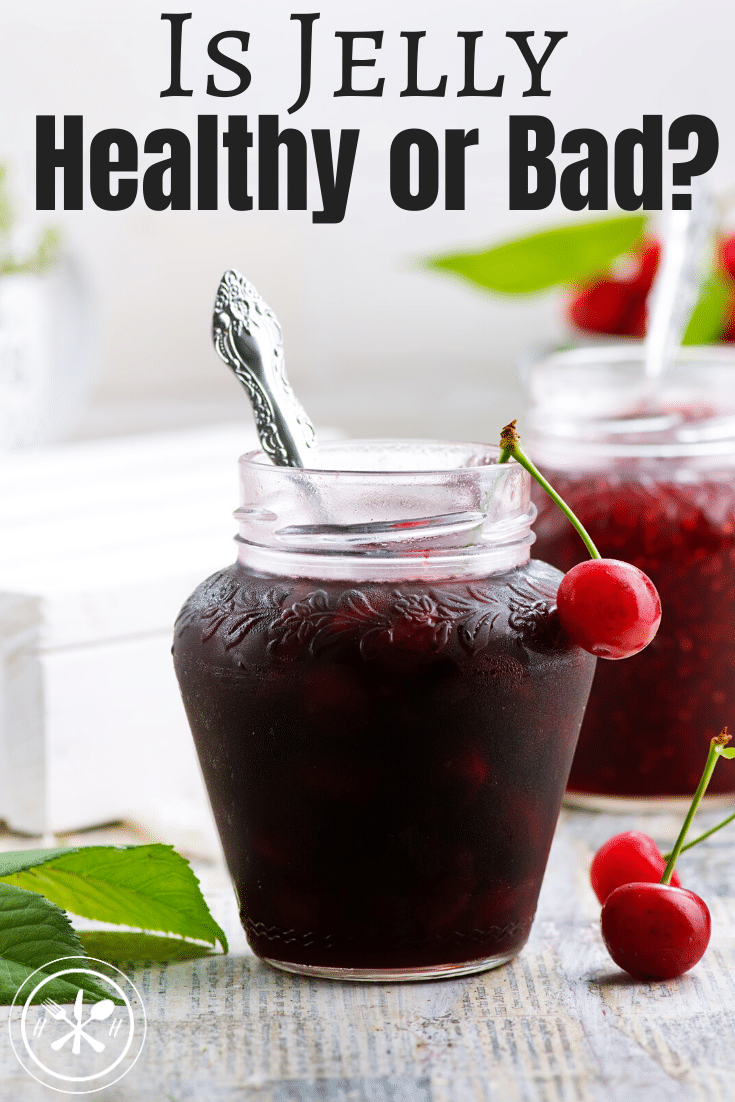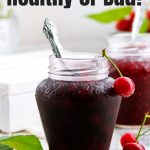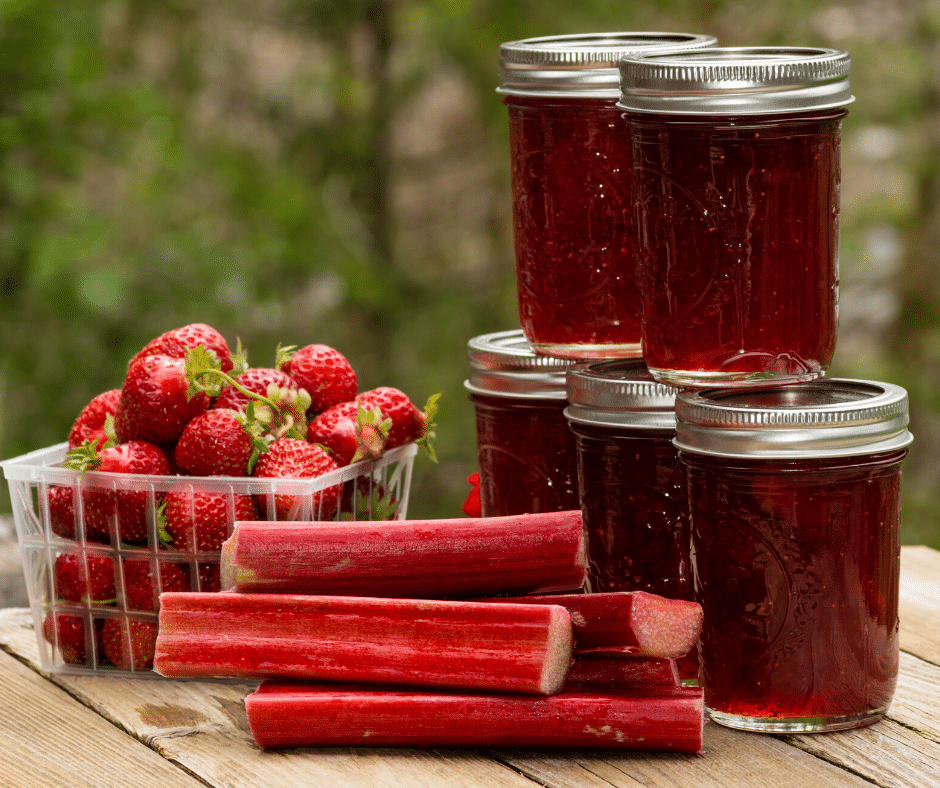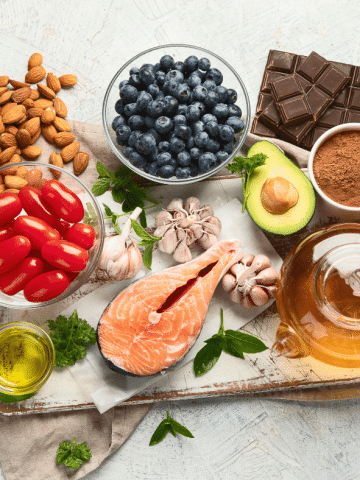
Sugar is the new saturated fat.
What I mean is, sugar is the new DEMON food that should be limited at all costs. You may have heard that sugar is inflammatory, disrupts your gut microbiome, causes fluctuating energy levels, and, worst of all, "makes you gain weight." These statements might make you wonder, is jelly healthy for me, or is it just another source of added sugars in the diet I should cut?
Whole Food vs. Added Sugars
First, it's essential to realize that sugar should be limited in the diet, especially added sugar, because there is some truth to the scary statements above. That doesn't mean you have to go around being militant about eradicating it from condiments and other things you consume. You should, however, be mindful of it.
In general, when you have the option to chose something with less sugar, you should take that opportunity to limit your overall consumption of sugar in the diet. However, there is an essential difference between sugar found in its whole food form and added sugar.
Sugar found in plants, while the plants are still intact (including fruit, vegetables, tubers, potatoes, corn, etc..), is not considered harmful in the diet. However, added sugar, which includes both refined sugar (like cane sugar or high fructose corn syrup) or "healthier" natural alternatives (like honey or maple syrup or juice) are associated with adverse health outcomes. For example, an apple is not considered an added sugar, but apple juice is considered added sugar.
Jelly Vs. Jam Vs. Preserves
Jelly, jam, and preserves are terms that often used interchangeably. However, the difference is significant when considering if jelly is healthy for you.
- Jelly is made from the juice of a fruit.
- Jam is made from crushed or ground fruit.
- Preserves are made from the whole fruit.
Jelly lacks many of the incredibly essential nutrients found in the whole fruit, including fiber. Also, jelly is made from not one, but two added sugars — usually, a combination of fruit juice and sugar.
In contrast, jams and preserves will have varying levels of added sugars to them, depending on the brand and type. Therefore it's best to choose a jam or preserve over jelly.
Pick the Healthiest Jam or Preserves
When comparing brands of jams and preserves, first look at the ingredient list. Most will contain the whole fruit or fruit puree, pectin (a necessary thickener for jams), and citric acid or lemon juice to preserve it.
In the remaining ingredients, chose words you can pronounce and understand. Using this rule will ensure you are eating as close to real food as possible, vs. a bunch of added chemicals and preservatives.
Then, compare accross labels. Nutrition facts panels now show you total sugar and added sugar. I compare accross both, but I care more about the added sugars. I try to choose the one with the lowest amount of both total sugar and added sugars. Sometimes, you can find brands that have no added sugars! That's ideal!
Healthier Jelly Alternatives
As mentioned, jams and preserves may be a healthier alternative. However, if you can't find without added sugars, you might try using whole fruit instead. For instance, instead of peanut butter and jelly, you could do peanut butter and banana or peanut butter and strawberry slices.
In general, the riper the fruit, the sweeter it will be. So, make sure you choose riper fruit to help mimic the sweet taste of jelly or jam.
Using honey or maple syrup may be a better option as well, depending on what's available in your area. Since jelly has a high amount of refined sugar added to it, honey may be a healthier option even if the sugar is the same amount in a comparable serving. Honey and other natural sweeteners have trace minerals and antioxidants than refined sugars don't have.
Overall: Is Jelly Healthy?
Jelly every once in a while is okay because you are unlikely to eat large quantities. However, if you (or maybe your kid) are a PB & J everyday type person than you might want to consider replacing jelly with jam, preserves, or fruit slices. Also, if you love your PB & J, check out are peanut butter and jelly sandwiches healthy? Spoiler alert, yes, but you need to use the right ingredients!
Read Next:
- Are Bananas Bad For You?
- 10 Misleading Food Labels
- Why Carbs Are Important
- 10 Tips to Eat More Real Food
- Why You Need Healthy Fat & 15 Ways To Get Enough
- Which Foods To Buy Organic










Pete says
What about fruit butters? I ask because my favorite choice for the J part whenever I make a peanut butter, honey, banana and jelly sandwich is listed as a fruit butter, even though the texture is more akin to that of either a jelly or a seedless jam. I’m puzzled by this and ask for a little clarification if possible.
Kelli Shallal MPH RD says
Hi Pete! Are you talking about things like apple butter, pumpkin butter, etc? Those usually have a ton of sugar so you'll need to look for the type with the lowest sugar and use it sparingly. Hope that helps!
Pete says
The label says spreadable fruit, Target’s website lists it as a fruit butter, but the texture is a cross between a jelly and a seedless jam.
The ingredient list is as follows: fruit syrup, black raspberries, lemon juice, fruit pectin, natural flavor. And no HFCS.
Kelli Shallal MPH RD says
Hi Pete. So the ingredients are always listed in order from most to least. Personally I wouldn't want fruit syrup to be the first ingredient, because that means it has a ton of sugar (fruit syrup = sugar.) That being said, right now, with the stores the way they are, I wouldn't worry about it. Next time, try to grab something with whole fruit as the first ingredient 🙂 if it's available.
Pete says
Fooducate has been my go-to guide for help in this respect, and many of the products that contain sugar usually don’t score above a C+. What I listed in my previous response actually is fairly high-ranking for its kind. Most jellies/jams/preserves don’t rank above C on that website. Even most honeys don’t, either, which is really weird. I don’t know why that’s the case.
The brand of fruit spread that I usually buy has a variety that lists the fruit as the first ingredient, but only one flavor - Concord Grape - is seedless, and I’m not the biggest fan of seeds in my fruit spread. That’s a personal taste preference.
That said, my usual buys for my other favorite ingredients for a sandwich - bread, peanut butter, and banana - rank at least a B or higher on Fooducate. Brownberry has been my go-to bread of late as I can at least find it on store shelves, either their whole wheat or multi-grain depending on what’s on the shelf. The other ingredients are fairly easy to find now that there’s so little panic buying going on.
Now with all that said, I’m hungry. Got me a nice peanut butter, honey, banana and jelly sandwich that I’m ready to eat now. *takes a bite* Mmm, so good.